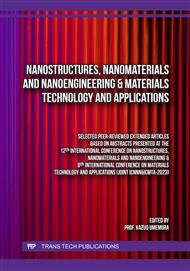p.109
p.115
p.123
p.129
p.135
p.141
p.147
p.155
p.163
Tailoring Structure-Dominated Mechanical Properties of Poly(L-Lactide Acid) Monofilaments via Controllable Molecular Relaxation
Abstract:
Controllable mechanical properties of highly performed Poly (L-lactide acid) (PLLA) monofilaments with oriented molecular structure could widen their applications, especially in biomedical field. Herein, different heat treatments were applied to regulate the degree of molecular relaxation of oriented PLLA monofilaments to tune their mechanical properties. These filaments were manufactured by melting spun and solid-state drawing processes. Then, they were processed by different heat treatments, including annealing, normalizing, and quenching. As the cooling time extension, an obvious molecular orientation loss in filaments happened and increased regularly, and it could reach up to about 35.1% maximumly. However, molecules only in crystal phase were limitedly affected. As a result, mechanical performances of these filaments exhibited a corresponding change after heat treatments. Young’s modulus and elongation at break were promoted after all kinds of post-processes and increased with longer cooling time gradually. But breaking strength showed a contrast change. It means that different heat treatments could be effective avenues to control mechanical properties of oriented PLLA materials by altering the orientation structure.
Info:
Periodical:
Pages:
135-140
Citation:
Online since:
March 2024
Authors:
Price:
Сopyright:
© 2024 Trans Tech Publications Ltd. All Rights Reserved
Share:
Citation:



